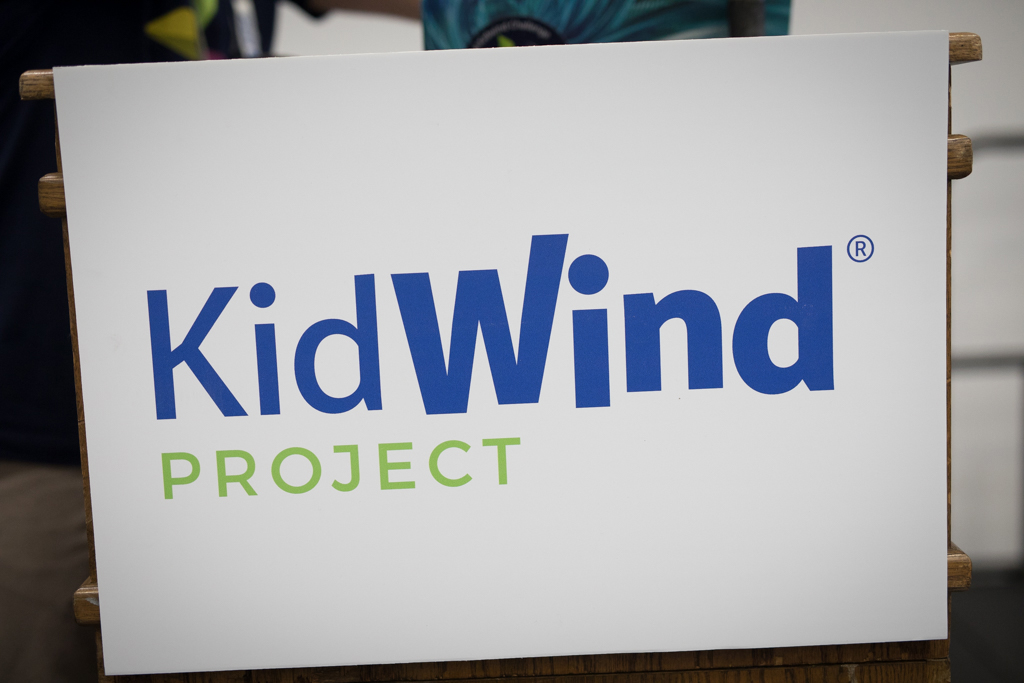Working Toward a Clean Energy Future
Guest author Cole Smith shares his experience winning the national KidWind competition in California.
Cole Smith, an eighth-grader at Jack Jouett Middle School in Charlottesville, Virginia, is a guest author for Accelerate. This year, Cole’s team won first place in the national competition for KidWind, an educational organization Apex Clean Energy is honored to support.
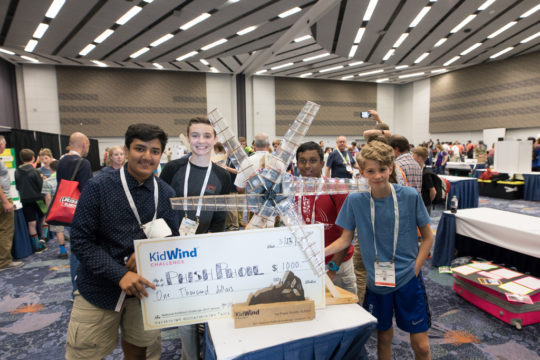
I first joined the Wind Power Club at Jack Jouett Middle School in 6th grade. I thought it sounded like a fun design opportunity, and I enjoyed building and testing our wind turbine. That year, we didn’t make it very far competitively, but I felt that I had learned a lot and decided to rejoin in 7th grade.
On the first day, we used popsicle sticks to make a prototype base design, and we figured out the actual dimensions. Over the next several weeks, we worked on the actual turbine. My teammate Nate and I measured and cut out wood and nailed it onto our triangular base. Other teammates, meanwhile, worked on airfoil blades by laser-cutting their frames and wrapping them in cellophane. We all then worked on the gear train, laser-cutting acrylic gears and attaching them to the standard DC generator. We worked up until the last possible minute, but we completed the turbine, tested it, and got it to work. In the end, our turbine was good enough to bring us to the regional competition.
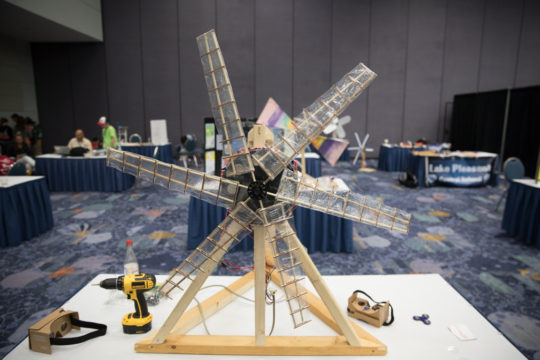
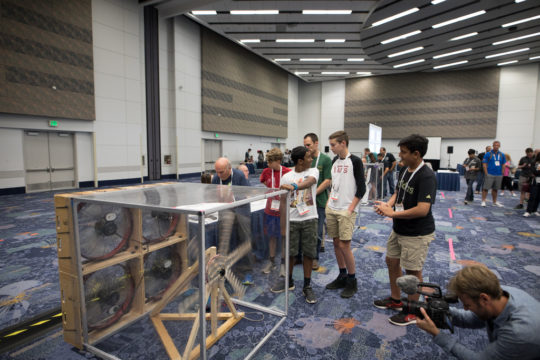
That was when the surprise came. I did not expect us to win at all, much less first place, and I was super excited for the chance to go to the national contest at the American Wind Energy Association’s annual conference, WINDPOWER, in California. But we realized that if we wanted to stay competitive, we needed to improve our design.
We redesigned our gear system by constructing an alternator using magnets—first pulled from computers and then bought online—reused wires, and a steel plate we cut out with an electric saw. We finalized it by setting the coils in resin and adding wind-power-styled heat sinks, and then we had a working generator. After some final small tweaks, we headed off to California.
The trip was pretty amazing. We landed, drove to our hotel, and assembled our wind turbine at the magnificent conference center in Anaheim. We managed to somehow double our turbine’s efficiency with some modifications made with duct tape in a frenzied twenty minutes—which is interesting considering that earlier we had spent three hours trying to achieve the same result, but I suppose stress can help a lot. After testing our turbine, with good results, I was feeling pretty confident about our chances. We packed up, went back to the hotel, and stayed up late practicing our windmill trivia and binge-eating potato chips.
The next morning, we arrived at the convention center, set up our area, and began testing our turbine. I had become much less optimistic about our chances since many teams had tied or surpassed our power output (although many of them were from high schools). We completed our testing, which was stressful and produced a lot of arguing, but the high-speed wind tunnel test went particularly well. We also completed one of the mini-events: the windmill siting activity. In this challenge, we had to find the best spot for a wind farm, taking into account wind speed, wildlife, housing, and other factors that siting experts have to take into account when planning a wind site.
By contributing to KidWind and other educational programs, the wind energy industry supports a venture that empowers middle- and high-school students to be creative and use math, science, and engineering to create something amazing.
On the second day of testing, we had to complete the vertical-axis wind turbine challenge, in which we were given an imaginary budget, a potential supply list, a time limit, and a testing device; the group who could produce the highest voltage with the lowest cost would win. We did poorly on this challenge, wasting much of our budget on supplies that did not contribute much. In the end, we broke most pieces off only to see the turbine perform better than it had before. Our design was bad, and our voltage was low, and we probably finished in the lower 33% of teams. But we had fun building the turbine and felt all right about it.
The last activity was a wind energy knowledge quiz. We had studied well for this, and our trust in our teammate Jerry paid off when he got right a question that the rest of us would have missed, tying us for the highest score. After that, we toured the WINDPOWER convention floor and saw models, huge steel contraptions, and a bit of virtual reality. Finally, we waited for scoring.
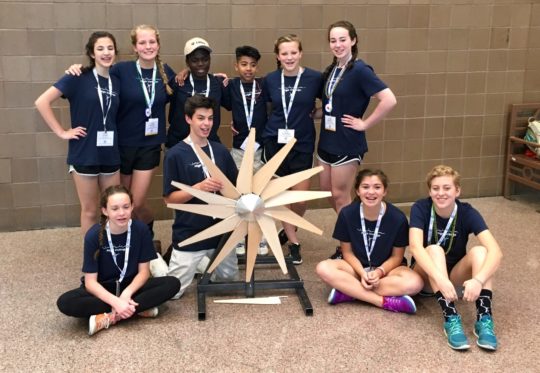
We were not really expecting much; we thought that maybe we would finish in the top 20 or, optimistically, the top 10, since we had done well on the wind testing. We were surprised and very happy when our fellow team from Jouett won the wind siting challenge, and we thought our school’s mission at the competition had been accomplished. The last of my hopes went away when the third- and second-place teams were announced, since I had thought we might have a chance—small as it may have been—at one of them. So I felt utter shock when the announcement was made that our team had won the first-place prize.
We walked up onto the platform, surprised and elated. I was so happy for hours after the convention, and it showed when we went out for dinner and ice cream. But winning was not the most important part. The important part is that this competition, the people who run it and compete in it, and renewable energy exist across the globe.
The engineers, software designers, administrators, and salespeople in the wind energy industry are the ones who make this happen. By contributing to KidWind and other educational programs, they support a venture that empowers middle- and high-school students to be creative and use math, science, and engineering to create something amazing. Without this type of support, we could not have won, but we also could not have gotten the experience of going to California, reading arcane wind-design journals, and failing for the fifth time to get a straight cut on a piece of wood. Without them, thousands of budding engineers across the country would not have the experiences that we have had. So we thank them so much for giving us this opportunity.
On top of that, by combating climate change and helping families like ours who do not want to power our phones with dead dinosaurs, they provide a way out of the mess humanity has created. And by supporting this competition, they support all of the people who want to make this vision of the future a reality. So we thank them very much for their support of us and this planet.
